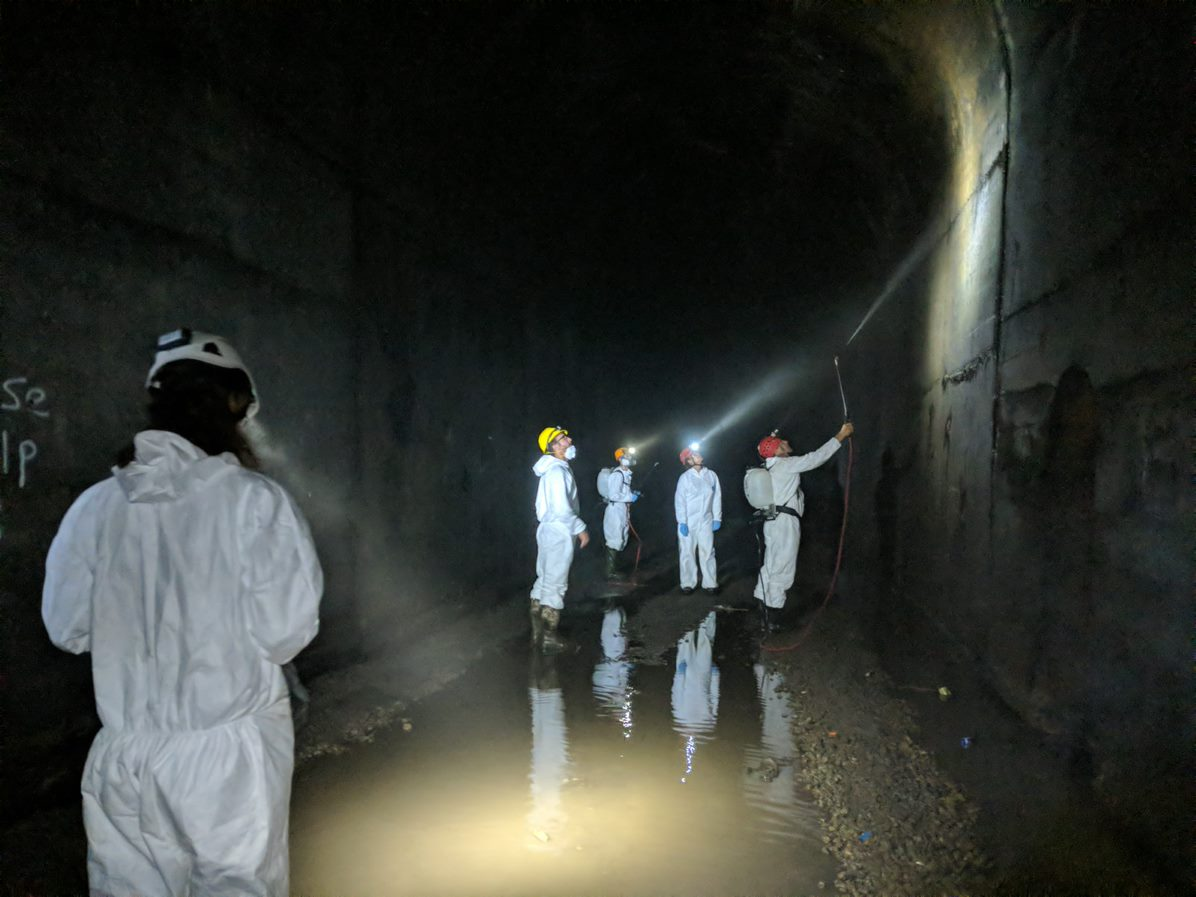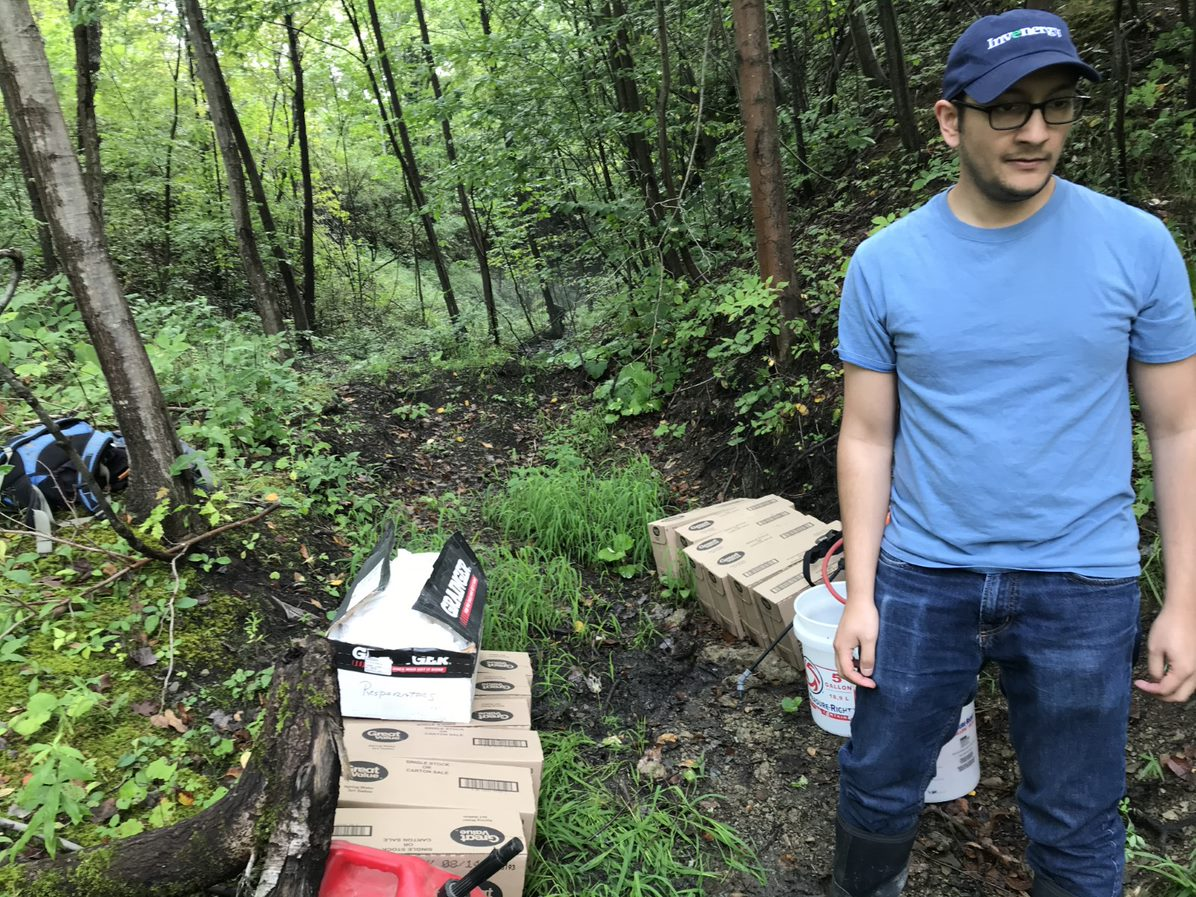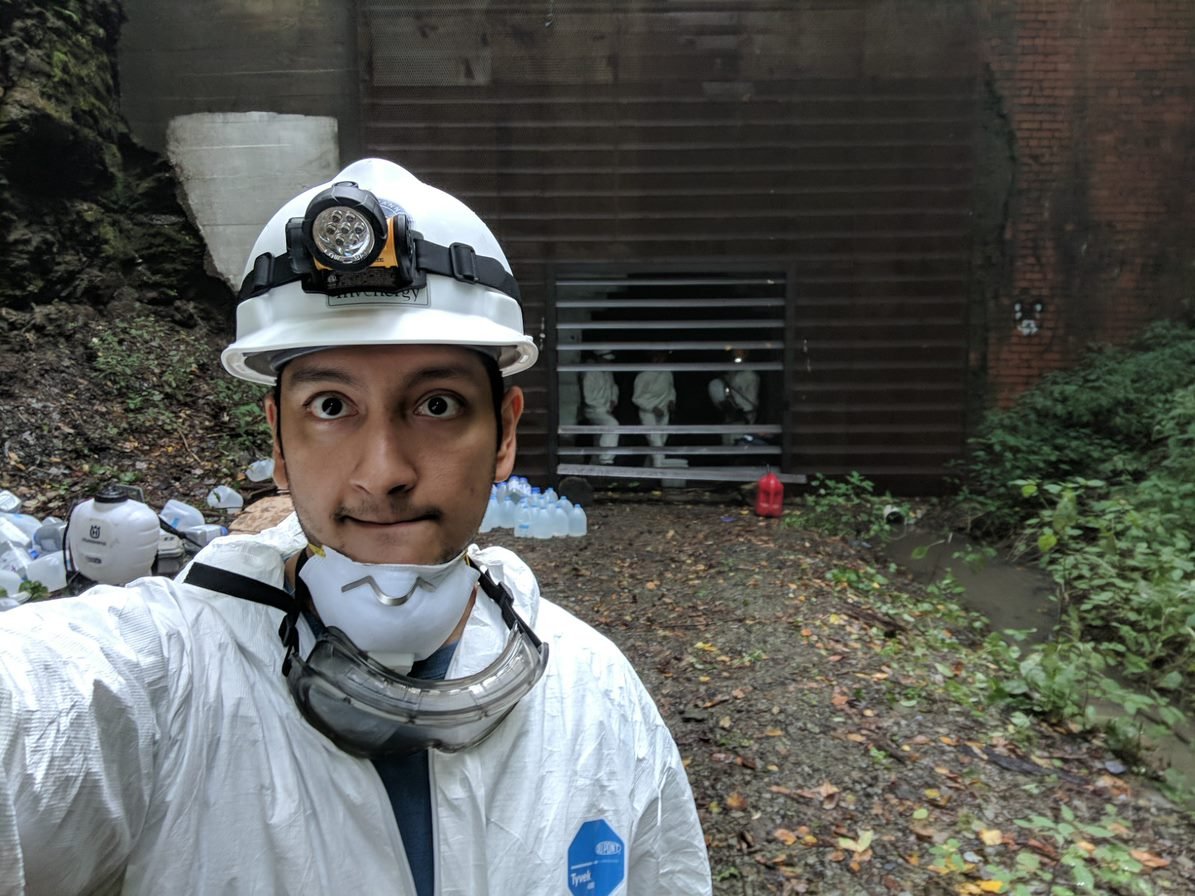Clean Energy
Expertise
Projects
Invenergy Services
Partners
Who We Are
News & Insights

Oct 31, 2019
power lines
Invenergy-supported Research Gives Hope to Bats Battling White-Nose Disease
by Invenergy Team

Invenergy’s Arjun Wadnerkar and the team of researchers treating the walls inside the tunnel.
A short walk through the lush western Pennsylvania woods brought a group of researchers and volunteers—including Invenergy’s Arjun Wadnerkar, Senior Project Engineer, Thermal Engineering—to a large, ominous looking abandoned railroad tunnel covered in graffiti. The group prepared to enter the tunnel by donning muck boots and coveralls, and while the experience could give many people the creeps, this crew knew that the work they were about to undertake was important.
The tunnel serves as home to hundreds of bats who use it as shelter during the winter months for hibernation. And while this was once a refuge for these animals, this tunnel—and countless other hibernation locations around the country—became the home of a deadly fungus called Pseudogymnoascus destructans. The fungus causes a condition in bats known as white-nose syndrome because of the way it alters the faces of the affected bats. The disease, which causes wing damage and abnormal activity during winter months when food is scarce, has ravaged bat populations around the country. According to the U.S. Fish and Wildlife Service, white-nose syndrome has killed millions of North American bats. There is no known cure for white-nose syndrome and the origin of the disease-causing fungus is unknown.

Arjun on the path that leads to the tunnel.
But there is good news. Thanks in part to support from Invenergy, the Pennsylvania research project may give bats a fighting chance. Representatives and researchers from the Lock Haven University, Pennsylvania Game Commission, Temple University, Resource Environmental Solutions, and Invenergy’s volunteer, Arjun, who was excited to be in the field, worked to better understand what is harming these bats and how it can be stopped.
“I don’t actually know anything about bats,” Arjun admitted. “But I have an interest in the environment. When I heard there was an opportunity for Invenergy to go out to Pennsylvania as a part of our involvement in this research, I was excited to volunteer.”

Getting geared up to go underground.
The group gathered at the opening of the tunnel to prepare the equipment they needed to treat the underground walls and ceiling with a nontoxic chemical that will combat the fungus and allow the bats to use the cave for hibernation without suffering from white nose syndrome. Previous versions of the treatment showed promise, and the team will count bats in the cave this year to understand how effective this treatment was. If this process proves successful, other sites will be treated—which could be a huge step toward saving millions of bats.

Arjun wraps up his day working to protect bats!
“This was a great experience,” Arjun said of the day. “I would definitely participate in something like this again and I am glad that Invenergy supports this kind of environmental research. It was amazing to learn so much directly from the scientists who are doing work in the field and to join them in making a positive impact.”
***
At Invenergy, environmental stewardship is central to our vision to be innovators building a sustainable world. Supporting this research is just one example of Invenergy’s ongoing commitment to greater environmental, economic and social sustainability. Learn more about how were making an impact around the world: www.invenergyimpact.com
Expertise
Projects
Invenergy Services
News & Insights
© 2023 Invenergy